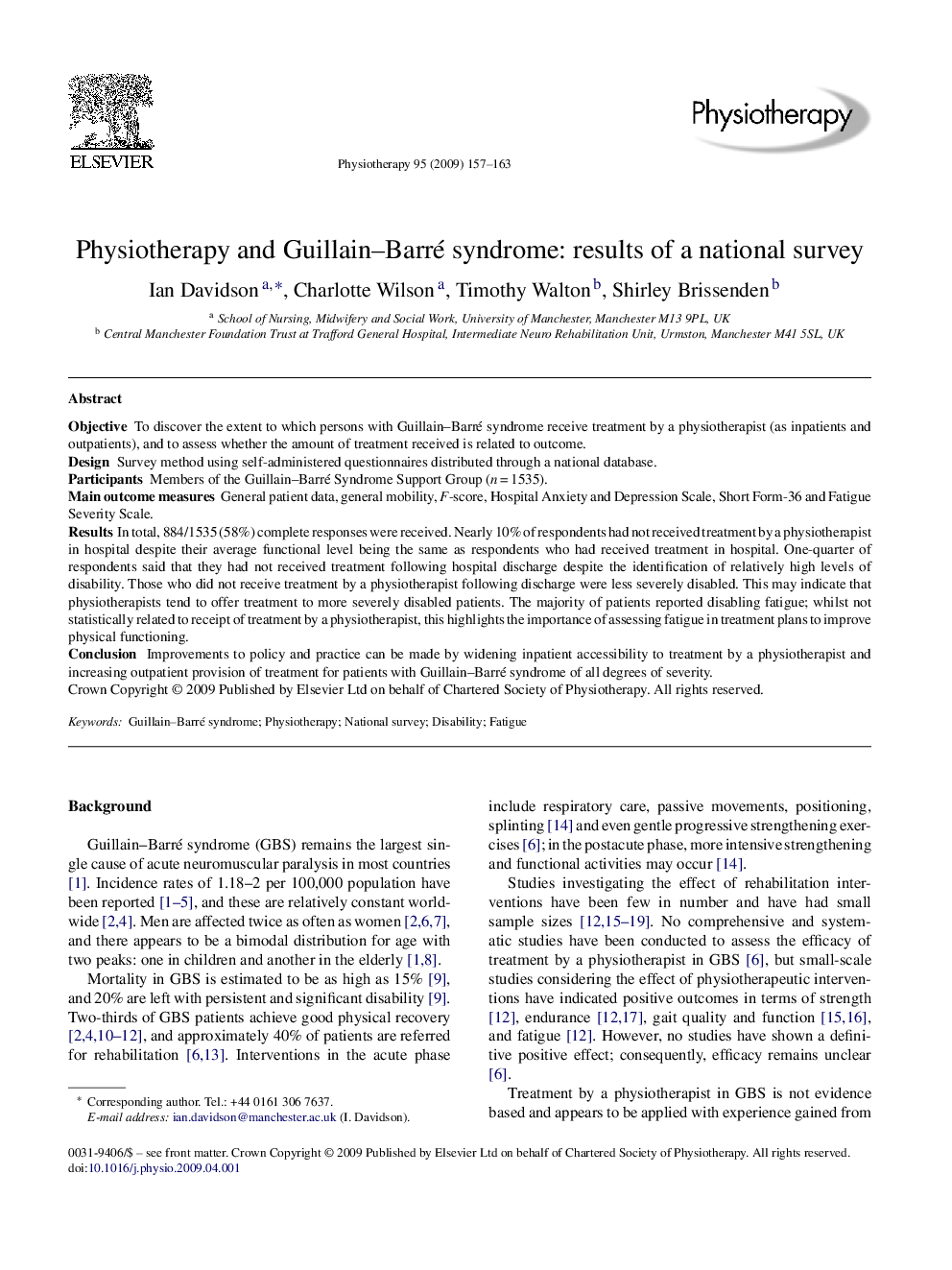| Article ID | Journal | Published Year | Pages | File Type |
|---|---|---|---|---|
| 2627899 | Physiotherapy | 2009 | 7 Pages |
ObjectiveTo discover the extent to which persons with Guillain–Barré syndrome receive treatment by a physiotherapist (as inpatients and outpatients), and to assess whether the amount of treatment received is related to outcome.DesignSurvey method using self-administered questionnaires distributed through a national database.ParticipantsMembers of the Guillain–Barré Syndrome Support Group (n = 1535).Main outcome measuresGeneral patient data, general mobility, F-score, Hospital Anxiety and Depression Scale, Short Form-36 and Fatigue Severity Scale.ResultsIn total, 884/1535 (58%) complete responses were received. Nearly 10% of respondents had not received treatment by a physiotherapist in hospital despite their average functional level being the same as respondents who had received treatment in hospital. One-quarter of respondents said that they had not received treatment following hospital discharge despite the identification of relatively high levels of disability. Those who did not receive treatment by a physiotherapist following discharge were less severely disabled. This may indicate that physiotherapists tend to offer treatment to more severely disabled patients. The majority of patients reported disabling fatigue; whilst not statistically related to receipt of treatment by a physiotherapist, this highlights the importance of assessing fatigue in treatment plans to improve physical functioning.ConclusionImprovements to policy and practice can be made by widening inpatient accessibility to treatment by a physiotherapist and increasing outpatient provision of treatment for patients with Guillain–Barré syndrome of all degrees of severity.
